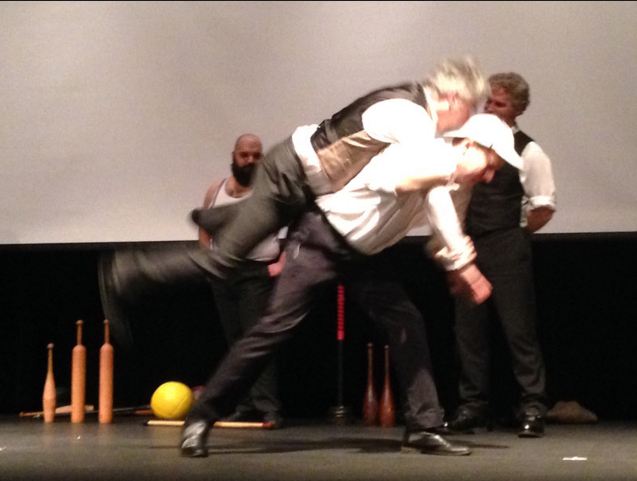- Originally published on the Bartitsu.org site on Wednesday, 13th January 2016
This short article from the London Daily News of Wednesday, October 29, 1902, offers a picturesque description of the Vigny stick fighting style in action, underscoring the central importance of agile, deceptive attacks and defences from the double-handed guard and also the frequent use of the butt end of the cane in delivering close-combat attacks.
Last night, at his School of Arms at 18, Berners-street, Professor Pierre Vigny gave a striking exhibition of the possibilities of self-defence afforded by a simple walking-stick. In these days, when the papers are full of “Hooligan” outrages, some such easy form of protection is by many considered almost necessary for late wayfarers.
Holding a malacca cane by one hand at each end, the Professor calmly awaited the onslaught of a skilled opponent with a similar stick. The spectator never knew which hand was to deal the blow, the released end moving with lightning speed, and a short hold was taken, so that the assailant, in guarding against an impending blow, often found himself hammered or prodded with the butt.
Then came an exhibition of stick swinging in which every part of the body was protected on all sides. With a perpetual loud hum, the cane made circles, in front and behind, so that no-one could reach within the guard without instantly receiving a blow that would shatter any bone to pieces.
After this the Professor showed the spectators how to take a knife or dagger from an advancing assailant. It looked so simple that one had to be assured that the trick really wanted learning.
And then, with the amateur heavyweight champion, Mr. Frank Parkes, the Professor showed his skill at boxing and the French system of boxing with both hands and feet, “la savate”.
With a sprinkling of people about who had learned Professor Vigny’s system, the Hooligan would soon find his occupation gone.









